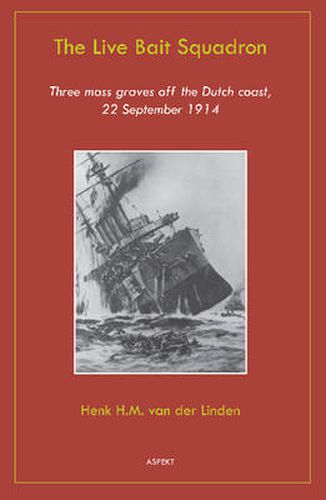Readings Newsletter
Become a Readings Member to make your shopping experience even easier.
Sign in or sign up for free!
You’re not far away from qualifying for FREE standard shipping within Australia
You’ve qualified for FREE standard shipping within Australia
The cart is loading…






On 22 September 1914 between 6.20am and 7.55am three British cruisers went down off the Dutch coast, HMS Aboukir, Hogue and Cressy. Of the combined crew of 2296 no less than 1459 men perished on their ships or in the sea. There were 837 survivors. The perpetrator was a simple German submarine, U-9. This event in the early days of the First World War came as a big boost to the Germans. But for the British it was a dire blow, the biggest loss ever inflicted on the Royal Navy, hitherto deemed invincible. The suffering was the more grievous now that among the fatalities were thirteen young boys, aged 15 and 16, while most of the other victims were reservists, mainly young family fathers from a few villages in the Chatham area. After some years of research the author has written a uniquely accessible reconstruction of this tragedy. Successively he pictures the build-up to this calamity, the crew’s trials and tribulations, as well as the consequences of the incident from both a British and a German point of view. The hard times of the crewmembers had to go through are reflected in the personal accounts of some of the survivors of the catastrophe. Two Dutch merchant vessels had rescued a number of them and the men were then received and looked after in Holland. That too is part of this pitiful tragedy, which, though almost forgotten, was one of the largest calamities ever in the history of naval warfare.
$9.00 standard shipping within Australia
FREE standard shipping within Australia for orders over $100.00
Express & International shipping calculated at checkout
On 22 September 1914 between 6.20am and 7.55am three British cruisers went down off the Dutch coast, HMS Aboukir, Hogue and Cressy. Of the combined crew of 2296 no less than 1459 men perished on their ships or in the sea. There were 837 survivors. The perpetrator was a simple German submarine, U-9. This event in the early days of the First World War came as a big boost to the Germans. But for the British it was a dire blow, the biggest loss ever inflicted on the Royal Navy, hitherto deemed invincible. The suffering was the more grievous now that among the fatalities were thirteen young boys, aged 15 and 16, while most of the other victims were reservists, mainly young family fathers from a few villages in the Chatham area. After some years of research the author has written a uniquely accessible reconstruction of this tragedy. Successively he pictures the build-up to this calamity, the crew’s trials and tribulations, as well as the consequences of the incident from both a British and a German point of view. The hard times of the crewmembers had to go through are reflected in the personal accounts of some of the survivors of the catastrophe. Two Dutch merchant vessels had rescued a number of them and the men were then received and looked after in Holland. That too is part of this pitiful tragedy, which, though almost forgotten, was one of the largest calamities ever in the history of naval warfare.